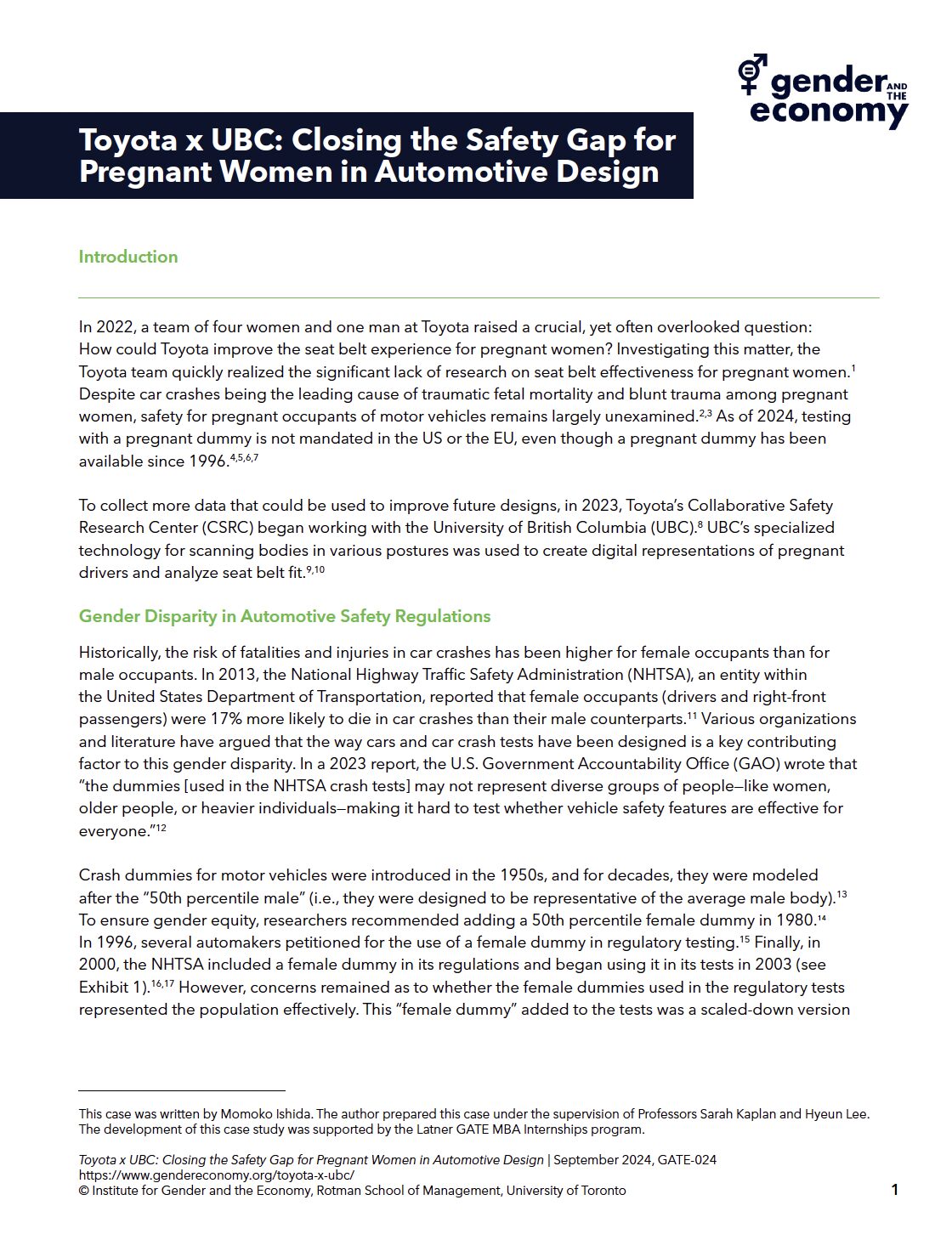Introduction
In 2022, a team of four women and one man at Toyota raised a crucial, yet often overlooked question: How could Toyota improve the seat belt experience for pregnant women? Investigating this matter, the Toyota team quickly realized the significant lack of research on seat belt effectiveness for pregnant women. Despite car crashes being the leading cause of traumatic fetal mortality and blunt trauma among pregnant women, safety for pregnant occupants of motor vehicles remains largely unexamined. As of 2024, testing with a pregnant dummy is not mandated in the US or the EU, even though a pregnant dummy has been available since 1996.
To collect more data that could be used to improve future designs, in 2023, Toyota’s Collaborative Safety Research Center (CSRC) began working with the University of British Columbia (UBC). UBC’s specialized technology for scanning bodies in various postures was used to create digital representations of pregnant drivers and analyze seat belt fit.

TO VIEW AND DOWNLOAD THE FULL CASE STUDY, FOLLOW THESE INSTRUCTIONS.
This case was written by Momoko Ishida. The author prepared this case under the supervision of Professors Sarah Kaplan and Hyeun Lee.
The development of this case study was supported by the Latner GATE MBA Internships program.




